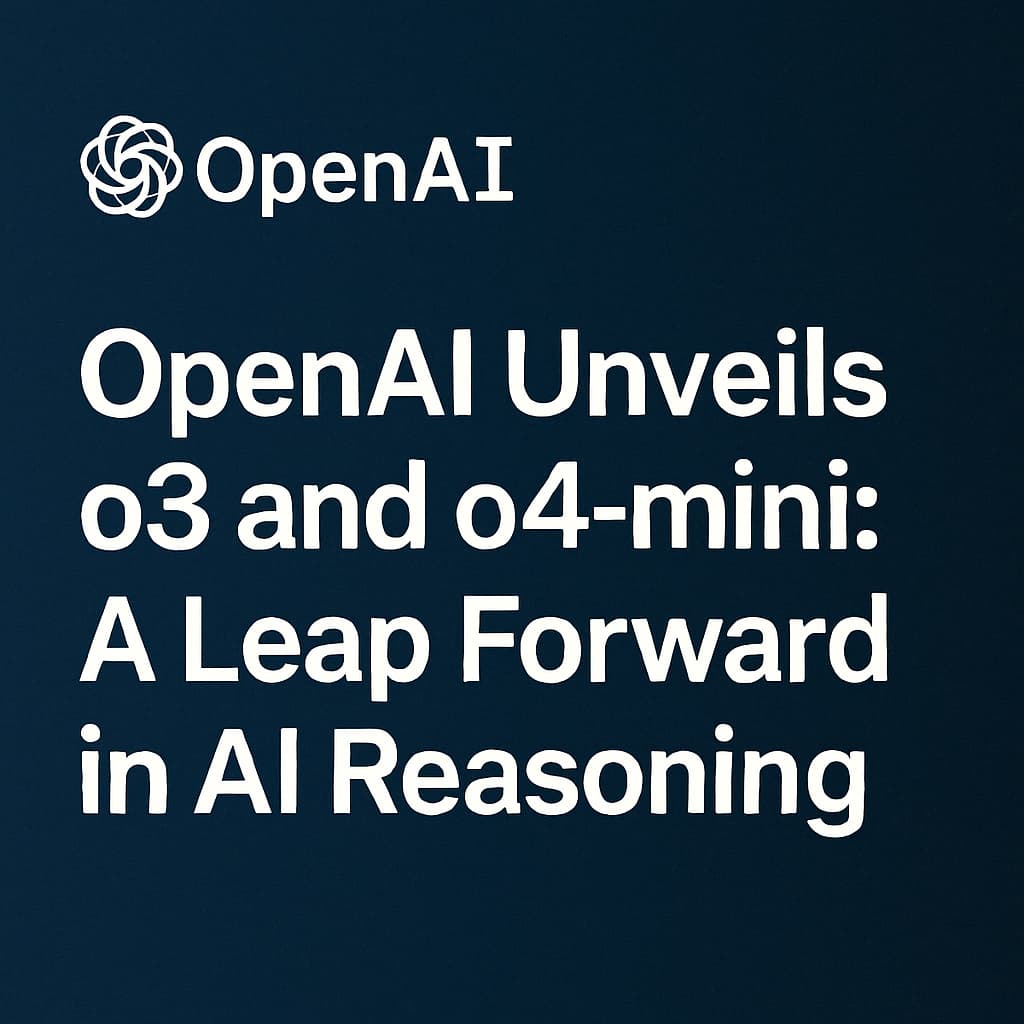OpenAI Unveils o3 and o4-mini

April 16, 2025 — OpenAI, a leading innovator in artificial intelligence, has announced the release of two new reasoning models, o3 and o4-mini, marking a significant advancement in AI capabilities. The announcement, detailed on OpenAI’s official blog, comes as part of a revised roadmap that prioritizes delivering enhanced reasoning power to users before the highly anticipated GPT-5 launch later this year.
A Strategic Shift in AI Development
In a post on X, OpenAI CEO Sam Altman revealed that the decision to release o3 and o4-mini ahead of GPT-5 was driven by the opportunity to significantly improve the upcoming flagship model. “We are going to release o3 and o4-mini after all, probably in a couple of weeks, and then do GPT-5 in a few months,” Altman stated, citing integration challenges and the need to ensure sufficient capacity for unprecedented demand. This move reflects OpenAI’s commitment to balancing innovation with stability, ensuring that each model delivers meaningful improvements.
The o3 model builds on the success of its predecessor, o1, which introduced advanced reasoning capabilities to tackle complex tasks in science, mathematics, and coding. Meanwhile, o4-mini is designed as a cost-efficient alternative, offering robust performance with lower computational requirements, making it accessible to a broader range of users and developers.
Enhanced Reasoning and Safety Innovations
The o3 model is a reflective generative pre-trained transformer (GPT) that excels in step-by-step logical reasoning. Trained with large-scale reinforcement learning, o3 employs a “private chain of thought” to plan and reason through tasks, resulting in superior performance on benchmarks like the GPQA Diamond (87.7% accuracy) and the ARC-AGI (87.5% accuracy), surpassing human-level performance in the latter. These achievements highlight o3’s ability to handle expert-level questions and generalize knowledge to unfamiliar challenges.
A key feature of both o3 and o4-mini is OpenAI’s novel safety technique, deliberative alignment. Unlike traditional safety training, which relies on predefined boundaries between safe and unsafe prompts, deliberative alignment enables the models to reason about safety policies in context. This approach reduces vulnerabilities to jailbreak attacks and minimizes unnecessary rejections of benign prompts, ensuring a safer and more reliable user experience.
The o4-mini, while smaller in scale, matches o3’s reasoning capabilities in many scenarios, particularly in technical domains requiring precision and speed. Its adaptive reasoning effort settings allow users to adjust the model’s thinking time based on task complexity, optimizing for either speed or accuracy. This flexibility makes o4-mini an attractive option for developers working on resource-constrained applications.
Availability and Developer Access
As of April 16, 2025, o3 and o4-mini are in the final stages of safety testing, with a public release expected within weeks. OpenAI has invited selected researchers to explore the models’ capabilities, focusing on rigorous safety evaluations and stress-testing for high-risk scenarios. The o3-mini model, released earlier this year, is already available to ChatGPT users and API developers, offering a glimpse of the reasoning prowess that o3 and o4-mini will expand upon.
Developers can access o4-mini through OpenAI’s API, which supports features like function calling, structured outputs, and streaming responses. However, neither model currently supports vision processing, a feature reserved for future iterations. Pricing for o4-mini is notably competitive, with costs significantly lower than those of o1, making it an economical choice for STEM-focused applications.
Competitive Landscape and Future Outlook
The release of o3 and o4-mini comes amid intensifying competition in the AI industry. Google’s recent unveiling of its Gemini 2.0 Flash Thinking model and DeepSeek’s open-model approach have pushed OpenAI to accelerate its innovation cycle. By releasing o3 and o4-mini, OpenAI aims to maintain its edge in reasoning-focused AI, particularly for applications in coding, scientific research, and complex problem-solving.
Looking ahead, OpenAI’s focus remains on GPT-5, which is expected to unify reasoning, language, and multimodal capabilities into a single, fully multimodal system. This ambitious project, slated for release in a few months, promises to eliminate the need for switching between specialized models, offering a seamless and powerful AI experience.
Conclusion
OpenAI’s introduction of o3 and o4-mini represents a bold step toward advancing AI reasoning and accessibility. With cutting-edge safety features, unmatched performance on challenging benchmarks, and a developer-friendly design, these models are poised to redefine how AI tackles complex tasks. As the AI landscape continues to evolve, OpenAI’s strategic releases ensure it remains at the forefront of innovation, paving the way for the transformative potential of GPT-5.
For more details, visit OpenAI’s official announcement.

